Poplar––Surprising Me
Many woods have surprised me through the years, even woods I have known and worked with on and off for 60 years. The assumption in the machining-wood world can easily be that all woods work the same way and give the same results. Pass a board into a machine and it works the same for everyone. In our world of handwork the knowledge attained and needed and absorbed goes deeper––much, much deeper. I know my wood from the inside out and it is because I generally feed my cutting edges into the wood using my own hands, skill, ability and, additionally, with all of my own energy. Through chisels, saws, planes and more, the wood gives me feedback minute by minute as do the tools themselves. I can use various terms like soapy, coarse-grained, silky, absorbing, crisp, crispy, gentle and many more. Cushiony describes a recent wood and grabby another. What about dampening? That is my favourite term for poplar. The wood characteristics increase my understanding and the words I apply mean something to me as I try to pick one that matches. This level of intimacy defines the species beyond what you get on commercial websites that only present terms accepted within their sphere selling materials. In my world I find an ever-expanding world of word surprises.
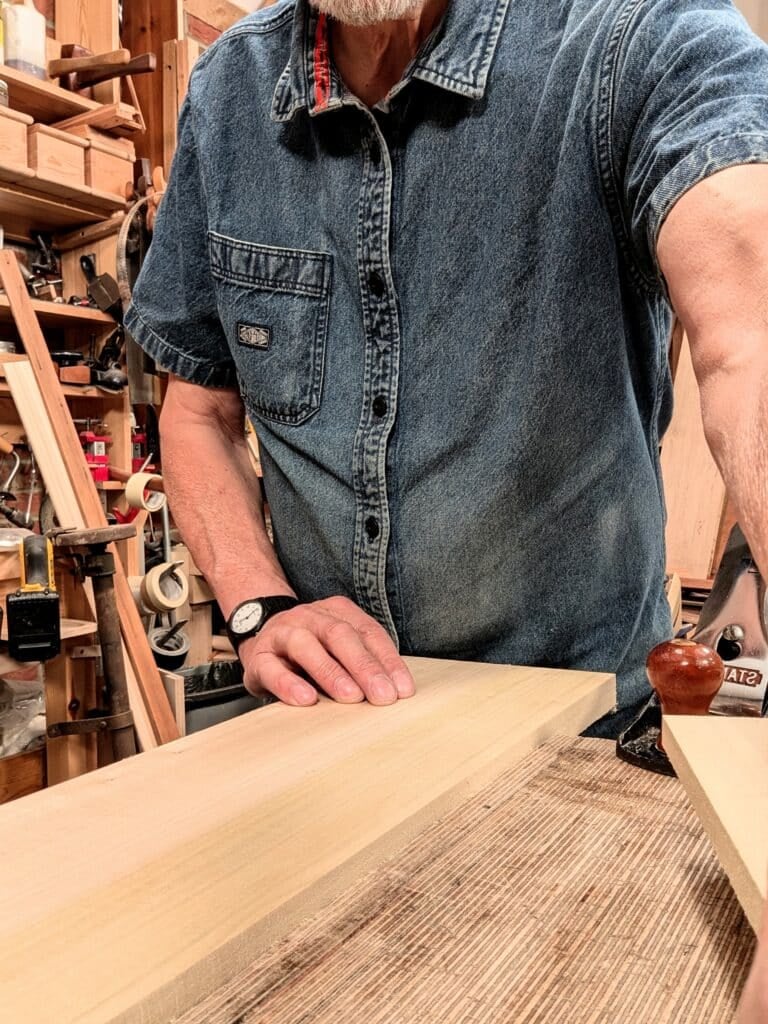
My recent use of Poplar gave me some new discovery, partially from my hand tool knowledge working them on this wood and then from my working with it on my bandsaw. very recently. I have had this happen before but tless so than on this particular occasion. I think this to be fascinating and hope not to bore you.
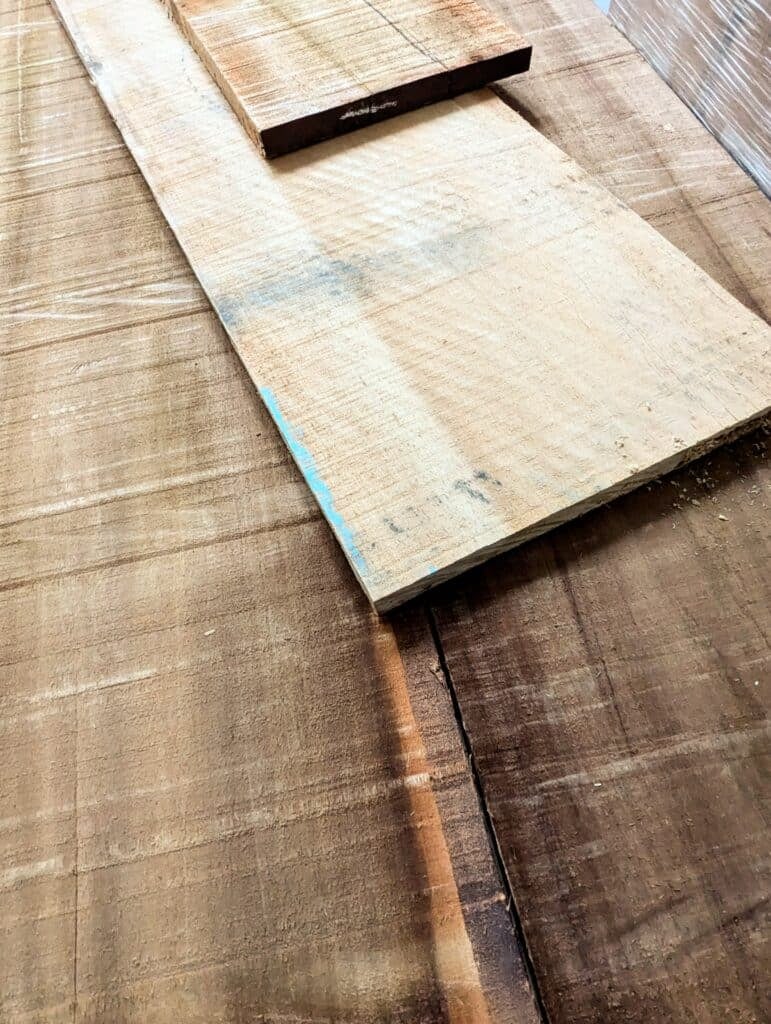
A few weeks ago I picked up some fine-grade Poplar (above) from my supplier. The racks were full and I got to pick my half dozen boards from about fifty. As Hannah and I flipped the boards we came across some stunning boards for a couple of my next projects. Why poplar is npot used more than it is I dont really know. I love to use it both as primary wood and secondary wood. Primary meaning the principal wood on the outside and secondary being the inside leass seen wood like carcass frame wood, drawer sides and so on. I think it is because it is less predictable than woods like maple and cherry, oak and walnut. In indistry you do not want wild personalities and divergent grain colouring and configurtion. These boards get left behind. At one time a supplier in the USA kept back the figured flame maple boards for me because no one else wanted them. I did, and he sold them to me at half the price of the dull and very boring maple. Poplar colouring can go from a deep brown and khaki to lime green and light tan or dark green and dark tan all in the same board. To get any uniformity can be impossible. I’m still going to try it on one the bedroom pieces as soon as I finish the present clothes storage one i am on now.
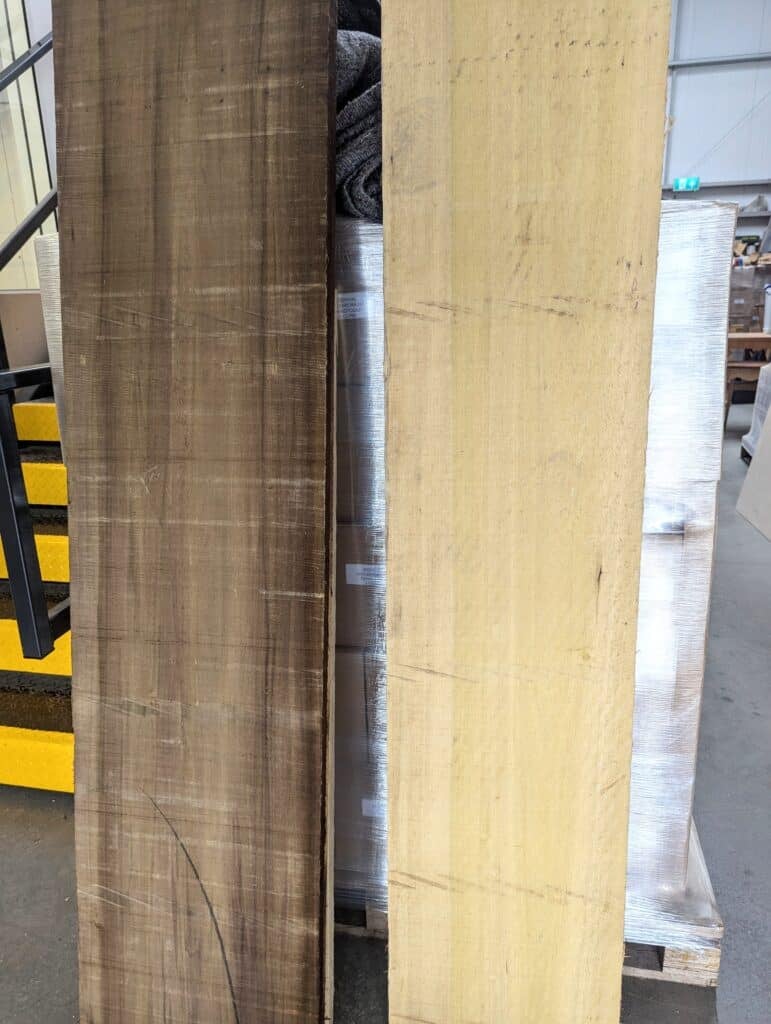
Here’s what happened though. After the different projects I make I usually sit down, not literally, and start putting things away, sharpening the edge tools and saws and bringing order to everything within my radar. My latest bandsaw blade owed me absolutly nothing. I’d ripped wide boards of walnut for a bookcase, spruce and pine for the bed and bedside tables. It is false economy to keep a blade in when it does not deliver the crisp cuts and ease of push. On a small bandsaw like mine, a 16″, it’s more the motor power that might get bogged down on some depths of cut. I can cut near to 29cm (11 1/2″) but prefer to settle on upto 8″ for the best results. hardwoods cut better than softwoods because of consistent density across the annual rings plus far fewer knots that are surrounded by divergent grain that can easily distract a blade to take the path of least resistance. On this day I change the 1/2″ blade I rely on that never falters. I know my tensions and settings by heart and it is as automiatic for me micro adjust everying as it is to breath. I’m like anyone else. I always enjoy cutting anything with newly sharpened tools, and though I wll never refer to any machine as a tool, it just goes against thre grain with me, I enjoy a new bandsaw blade as much as anything. I slipped my piece of thin wood into the gap and against the fence and immediately the board went of track by a good distance. I stopped, switched off and pulled my board back. I was resawing a 30 mm thick board in the hope to finish two pieces out at 13 mm for my drawer sides. I flipped it end for end and started over and within three inchess the same thing happened. My board was 20 cm (8″) poplar, clear, straight-grained stock. I checked my tensions, considered drift, which I never, ever get, looked at the guides, which are generally unneeded for resawing if the tensions are set right really. So I did what I thought best and changed out the blade as this had not happened to me before. But exactly the same thing happened again with the second brand new and unused blade. It was the weekend and I had other things to do so I left everything as was.
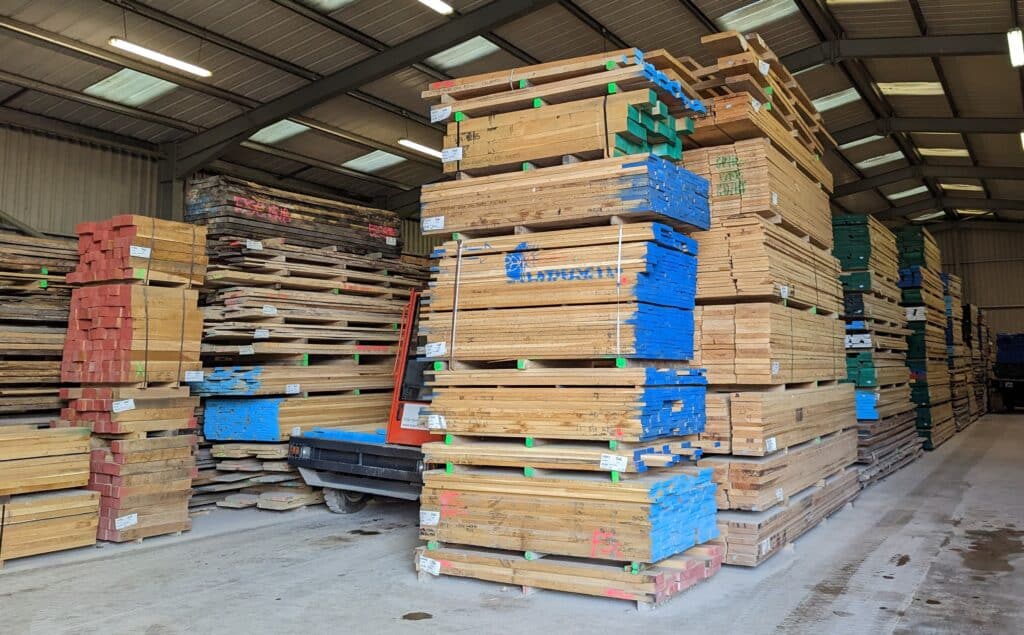
The break did me good. It was on Sunday afternoon that my mind drifted to Poplar and my experience working it with hand tools. I’ve carved it often enough and used it regularly. The wood has good resiliance, even enough texture butsometimes it seems to grab the saw or the handsaw, even the gent’s saw in finer work. I allowed myself to dwell on these charcteristics and thought obout its tendency to sort of grasp the wood. then I thought about how the chisel feels when you pare cut to remove waste from a hinge recess or plane the surface sometimes but not irregularly. Now that is not to say it is always a problem, it’s just part of its nature you see. A charactistic if you will. But this was my first experience with machining it at this particular time.
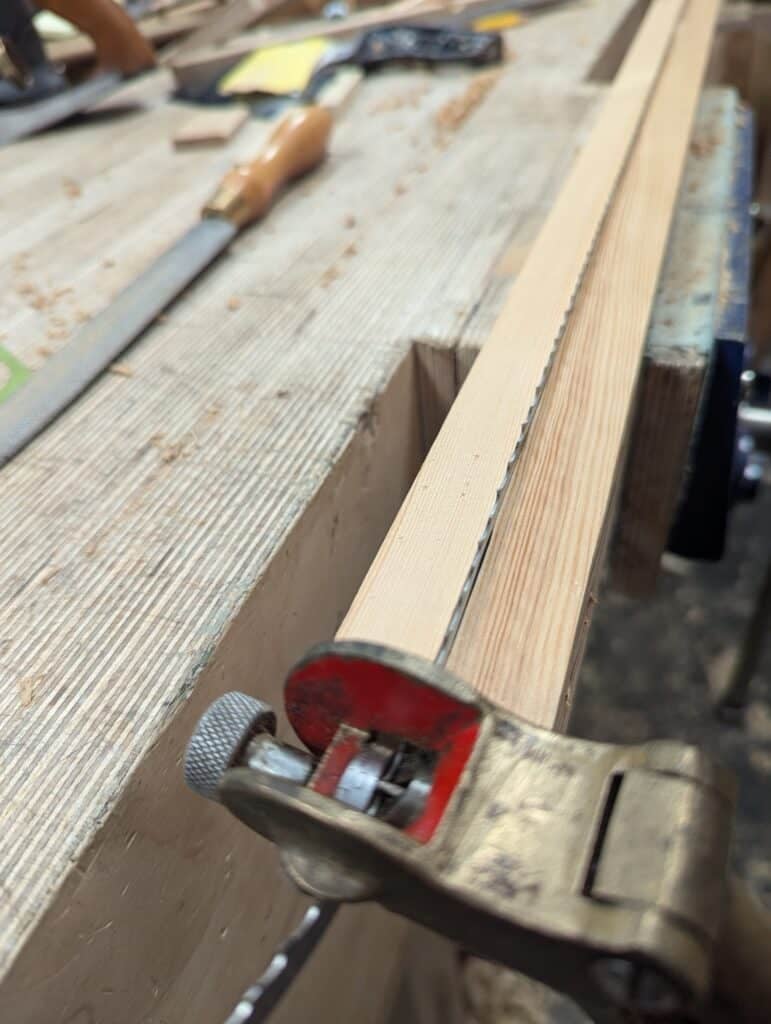
First thing Monday morning I looked at the first blade and then the second. The set seemed quite finely set but standard and adequate so I pushed an oak board full width at 8″ on edge and it was cutting just fine. But even a 3/4″ piece of wood flat face on the table deviated no matter how slowly I went or how much lateral pressure I applied to keep it tight to the fence.
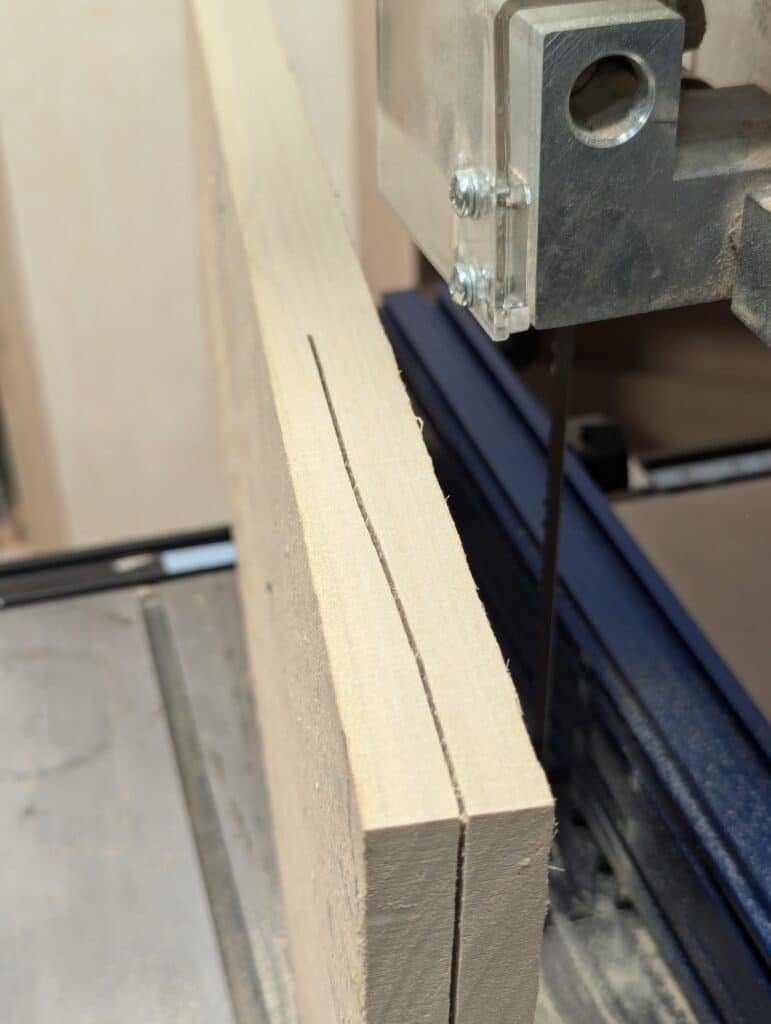
In fact, doing this would almost stop the machine. I did what anyone would do and decided to add set to the teeth (no they wouldn’t really). The current kerf was .75 mm.
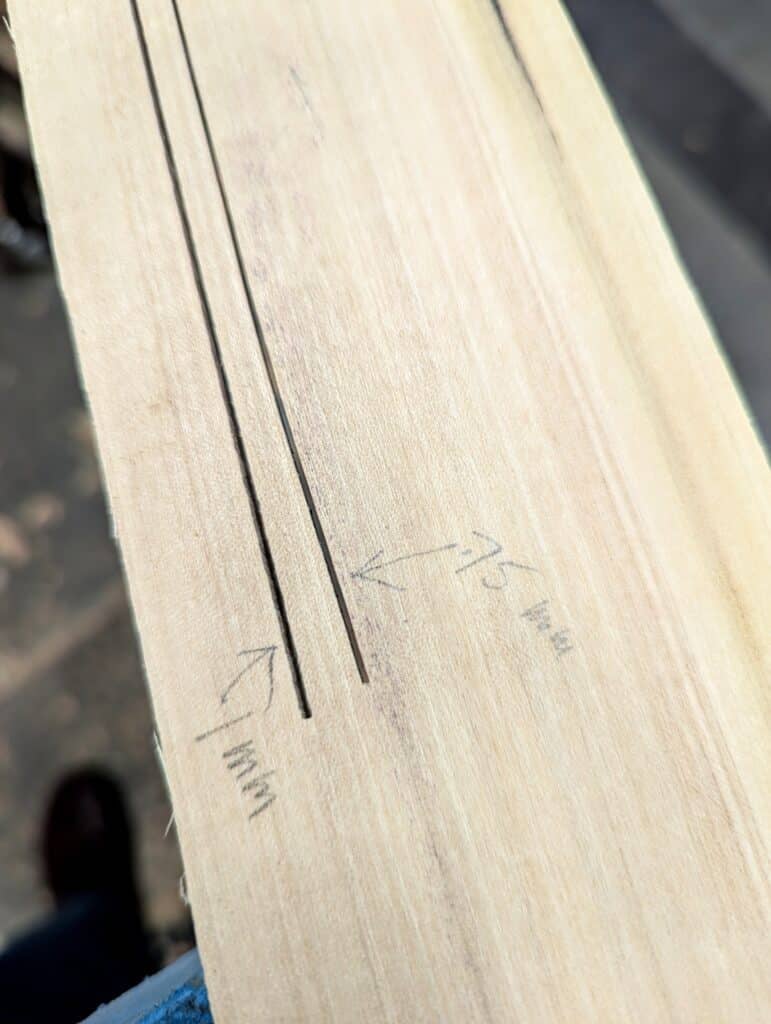
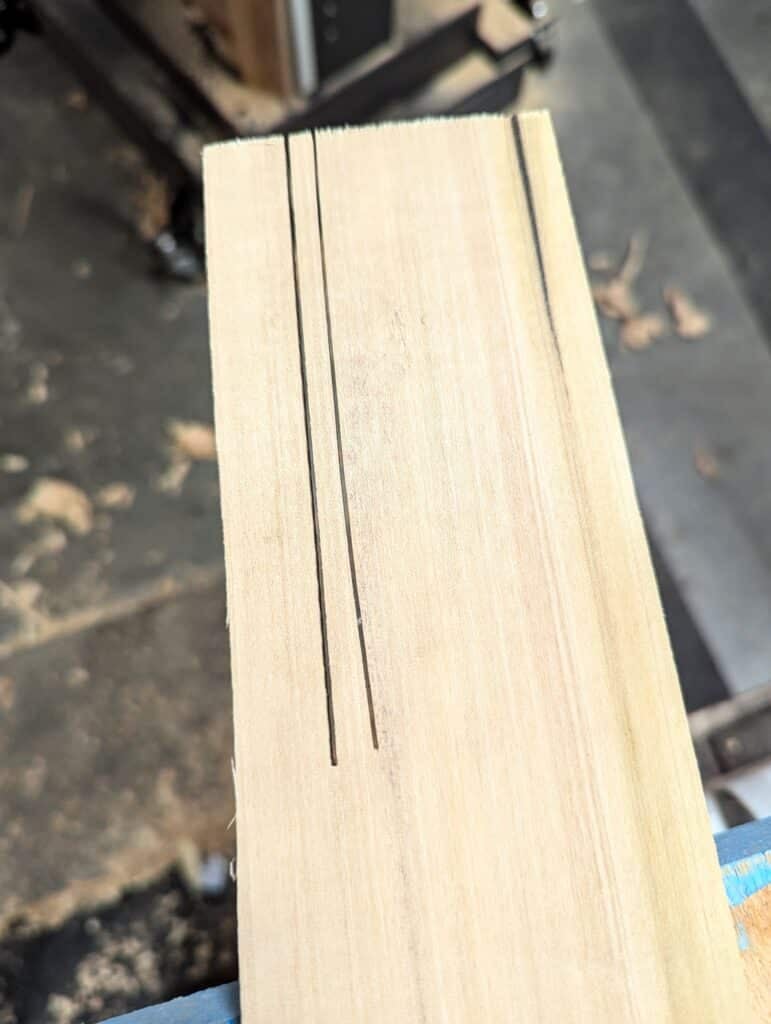
Using a regular Eclipse handsaw sawset, I increased the set to 1mm. Back at the bandsaw the blade zipped through the wood with zero argument and the outcome was the ability to cut my poplar down the centre to get the two 13mm boards per 30 mm thickness I needed.
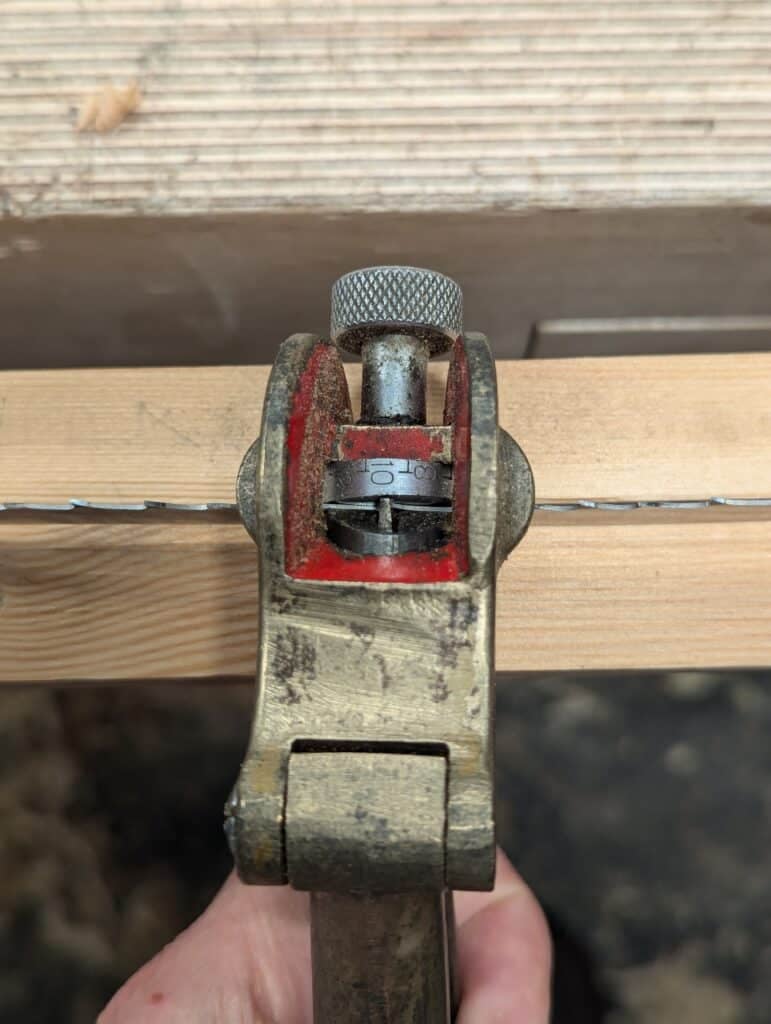
It’s one thing reading books and sales blurbs about materials we depend on and entirely another for your long term experience that can only, only come though working with hand tools. if you want to work with hand tools the experience is ongoing and never ending. Here I am at 74 and still learning but not so much from others these days but through care and consideration as I wor and try to resolve issues. Will this be the first time someone has written about what they learned from the hand tools they’ve worked with for 60 years affecting their bandsaw cuts? Who knows? Possibly, maybe, probably, could be . . . !
It would be all too easy to blame the bandsaw blade maker for not making the kerf deeper but you must also remember that they are making to optimum performance for blades used on more common woods. The .75 MM kerf does not just mean a one-size-fits-all outcome on a thicker kerf or blade would work better. We have other things to consider. Yes, the main reason is obvious in that we lose less wood, albeit so small, but then more kerf takes more energy and puts more strain on the motor and bearings and so on. In other words there is a knock-on effect we might not think about but we, from our experience, do.



Interesting observations on the cutting quality of Poplar. It’s not something that I have personally used for furniture so I’ll watch your new piece with some interest.
Again, I’m not sure how English-grown Poplar wood converts for furniture making – it’s more a parkland tree – but some years ago I decided to carve a replica figurehead. It was not full size, the original was almost 7 feet in length, so I reduced it, scaled down to about 1/5 size.
Instead of Lime, and to keep the cost down, I had the chance to use 2-inch-thick imported Poplar boards, (French most likely), which I shaped, cut and glued up to make the rough outline maquette of the figure. It was going to be painted, as was the original, this way, the variations of shade in the boards did not matter. It carved well enough but I did notice differences in cut quality and resistance to the gouge as I cut through from one board to the next.
On another tack, during a visit to the National Gallery in London, I noticed that many of the Italian Renaissance pictures were painted on board (as was the custom before canvas), described as ‘Poplar’.
Mr. Sellers,
First, I would like to thank you for introducing me to the joy of using hand tools for woodworking. Your calm and therapeutic explanations, and your love for the work, as convinced me to take up woodworking as a therapy. Every time I use the plane, the saw, the spokeshave, or the chisel, I enjoy the sounds of different cuts, the smell of different times of wood, and the lovely curls that come out as I shape a slab of wood into a piece of furniture.
Second, I am a teacher myself (assistant professor), and you have inspired me to be a better teacher. I build optical systems, and your style of teaching has enabled me to be a teacher who loves demonstrating experiments to my students (and the class). I speak out my mind as I build the setups to show students how I think, and hopefully help them become better experimentalists.
Third, I absolutely love poplar. I chose it because I am still a novice, and want to hone my skills on wood that is easy to work with, and affordable (it is one of the cheapest options here in southern California). I actually love the pieces that have the stark brown and purple (I hope I got the color right) streaks — it makes the pieces even more interesting. The curls are so fluffy, I can nearly make a pillow out of them and sleep in my workshop.
I have purchased your book, and the spokeshave kit, as a small form of gratitude. And in a larger context, I am in a mission to convince others to take up hand tool woodworking for the joy that it is, and enjoy the slow, and sure ways our hands can make magic with these natural materials.
I stay every grateful, your e-student from across the pond.
I never would have thought to check my blade kerf nor see that as a problem solver.
That’s a lot of teeth to set! I wouldn’t think it would take too much more power did you see or feel any difference other than a non wandering cut?
Wow! Interesting. I didn’t even realize that people set/reset band saw blades. I’ve had cuts go awry like that when trying to cut the green-wood that I often start with; perhaps more set would help with wetter wood? I use various native species but often; ash, beech, oak, and occasionally: leylandii, cedar, birch, yew, holy, alder and even elder!
I still need to figure out how to fit a new drive belt to my secondhand Axminster/Perform bandsaw (12″ which I considered large for a British amateur, so interesting to read that you consider 16″ small :D).
Happily I can fall back to my bow saw a, handsaws, axes (and, as a last resort, my battery chainsaw – a good compromise replacement when my old petrol chainsaw finally packed in).
I’m no bandsaw expert, but I would probably consider a different blade for cutting wet wood over dried. A coarser one, probably. Just as I would probably use a cheap non-sharpenable saw for cutting wet wood (I don’t do a significant volume) in my garage to avoid blunting my good saws. I know that would mean switching out blades, but you’d get a longer life out of both if you had dedicated blades for wet and dry (if you’re doing it a lot). Switching the blades regularly also gives good practice on setting and tensioning and the like, so you’ll not forget the steps and become proficient at it, which slightly offsets the hassle!
hi Paul you make your wood working and thought process sound like poetry with passion shining through I’m currently making a spice rack with.hand tools using dado and dovetails
it’s so peaceful almost trance like working the wood with vintage tools
I have learnt so much from your YouTube channel from saw sharpening to cutting teeth
I repurposed an old made in sheffield saw I cut 15ppi a d its amazing thank you so much for your inspiration
Hi Paul,
Another great blog. Wouldn’t it be great if everyone had your humility and humbleness. To think that at 74 you’re not only a great master of your craft with the great gift of teaching, but also still a student willing to display your challenges so others can also learn from them. This challenge with poplar and the bandsaw reminds me of the first time I used my bandsaw. I set the 3/4 blade too far back and the guides removed the entire set from the blade. It took me a week of cursing and making adjustments and fine tuning to no end until I finally realised what the cause was. Not wanting to look stupid and returning to re-purchase the blade, I took to it with an old sawset. Certainly did the trick, was finally tracking where it should have been. Thanks again.
Marcus
was never a fan of poplar lumber due to its inconsistent (unattractive?) grain colors.
while finishing a child step stool using poplar, my opinion of its grain colors has change.
it is inconsistent…and attractive! and hand tooling poplar is a pleasant satisfying experience.
liv’en and learn’en…and enjoying ur lifestyle woodworking articles.
Thank you Paul for this and many things I have learned from you. I consider myself a beginner and I enjoyed the time I have had worked with poplar. I have been baffled before to see this drift while resawing poplar on a bandsaw that I know was correctly setup. I incorrectly assumed the problem was feed rate but I just could not find the sweet spot.
The 7th and 8th pictures in your blog clearly show the problem, the cause, and the solution. I can see where the drift of the thinner kerf is following the grain direction of the poplar and where the wider kerf corrects the problem by taking a slightly bigger bite overcoming influence of poplar’s finer and softer grain.
Thank you for once again “turning on the light”.
Paul,
Your comments about the various colors found in popular are interesting. As a hobby woodturner I have a source of cabinet maker cut off strips of popular which I use to make segmented pieces to turn. I have noticed the green to light brown variations in color and at first thought about segregating them as much as possible to avoid any color “conflict” in the pieces. Finally I gave up and just mixed them all up and when finished, to my surprise and delight, the color mix adds interest and in some cases apparent depth to the bowl or vase or plate turned. Thank you for making popular more popular.
I too have run into that problem from time to time. My solution has been to swap out the rip blade for a resaw blade, which allows for more tension and naturally has a wider kerf. It’s not ideal, as I might have just two teeth in the board at a time, but feeding the wood slowly enough seems to get the job done. And you leave a rougher surface, but you’re going to be planing it anyway, so what’s a few extra swipes? Just cut it a hair wider and all is good.
I have never considered adding more set to a bandsaw blade before. But it makes sense. I’ve done it with hand saws plenty of times though. And if doing a lot of cuts, it would probably save time. So I’ll have to add that idea to my tool box for future use, as it may come in handy one day. So thanks for the tip!
An excellent example of believing that the problem is not that the tool is bad but that the tool needs to be adjusted. It demonstrates the importance of fine tuning your tools instead of buying new tools.
Oops, I forgot several other native species that I’ve used to a greater or lesser extent, for greenwood projects if not fine woodworking e.g. sweet chestnut, plane, lovely walnut, hazelnut, hawthorn (or possibly black thorn? Burrs to make hand carved bowls), goat/crack willow (for bowls) and various garden shrubs and hedgerow plants (not least box, good for repairing vintage tools, such as making new stopped wedges).
Also, two old discarded wooden beds (the legs were proved useful for making sharpening stone boxes) and numerous pallets, for rough garden projects (such as composting bins and shed repairs).
And sycamore and field maple. Wow I didn’t realize how many different trees I’d encountered/used already. I might get some fruit woods, apple and/or plum wood, in the near future.
And some salvaged old short floor boards (from the 60s but not laminated, possibly oak?).
Is horse chestnut used for anything (other than conkers).
the smell of fresh cut poplar at least what we mught call.poplar where i am from could gag a maggot. good wood otherwise though.
Paul, thanks for your commentary on poplar. We inherited a poplar chair and it just makes you want to pet it.
I’d welcome your thoughts on modern glue. I started woodworking only a few years ago and was building furniture for a snug (in California!). The hype on glue is that it was stronger than wood–so I butt-glued the pieces (including two table tops) with no reinforcements (like biscuits, dowels, etc). I also put topcoat on all edges of the wood. So far it has worked flawlessly.